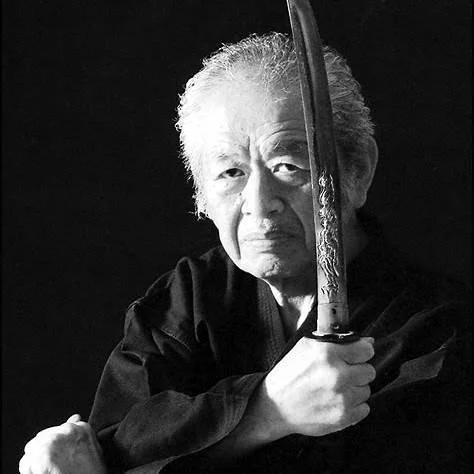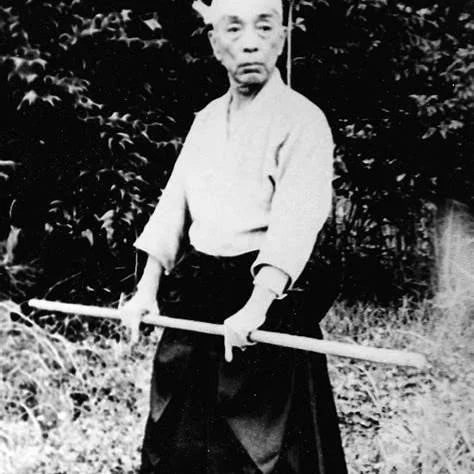Acupuncture and Body Balancing - Japanese Integrated Medicine
Dr. Masaaki Hatsumi, the renowned martial artist and head of the Bujinkan martial arts system.
What is Acupuncture & Body Balancing - AKA Japanese Integrated Medicine?
For centuries, Japan has been a cradle of profound martial and medical traditions, where the art of combat was inseparable from the art of healing. Among the modern guardians of this legacy, one name stands out—Masaaki Hatsumi. Renowned as the last true ninja and the head of the Bujinkan martial arts system, Hatsumi not only preserved the warrior traditions of ninjutsu but also safeguarded the ancient healing practices that accompanied them. Hatsumi inherited the teachings of Amatsu Tatara, an ancient Japanese healing system believed to be over 2,000 years old. This system was passed down through warrior clans, integrating osteopathic-style bodywork, acupuncture, energy healing, and trauma recovery techniques.
Hatsumi structured Amatsu Tatara training by teaching select senior students, including Dr. Chris Roworth and Dennis Bartram, who later helped spread Japanese Integrated Medicine (JIM) in the UK.
Katie trained intensively for four years under Dr. Chris Roworth. Dr. Roworth has played a pivotal role in bringing the knowledge of Japanese Integrated Medicine to the UK, bridging the gap between ancient wisdom and modern healthcare. With over 30 years of experience, he has refined and adapted these traditional techniques for contemporary clinical practice, ensuring their continued relevance and effectiveness in today’s clinical practice.
In feudal Japan, warriors were expected to master both the sword and the healing hand. Injuries in battle, whether on the battlefield or in training, demanded effective and immediate treatment. This gave rise to Japanese Integrated Medicine (JIM)—a holistic approach blending martial wisdom with medical science.
Hatsumi inherited this dual knowledge from his teacher, Toshitsugu Takamatsu, who passed down both combat techniques and ancient healing methods.
Japanese Integrated Medicine: The Core Modalities
Japanese Integrated Medicine is a synergy of multiple disciplines, each contributing to a warrior’s ability to heal themselves and others. Some of the key modalities include:
1. Japanese Acupuncture 按摩
There are key differences between Traditional Chinese Medicine (TCM) Acupuncture and Japanese Acupuncture, including:
Smaller Needles: Japanese needles are of a finer gauge.
Superficial Insertion: needles are inserted at a shallower depth.
Palpation - touch before treatment: emphasis is placed on feeling the acupuncture channels to locate overactive Qi for precise needle placement.
Reduced Qi Sensation: Traditional Chinese Acupuncture elicits a stronger Qi response, whereas Japanese acupuncture is more subtle.
Incorporation of Moxa (Integrated Heat Therapy): Japanese acupuncture often includes moxibustion as part of the treatment.Anma: Acupressure & Shiatsu Massage
2. Anma 按摩: Acupressure & Shiatsu Massage
Anma is the integration of acupressure and Shiatsu massage, focusing on relieving tension, improving circulation, and restoring the body’s natural flow of energy.
3. Seitai 整体: Spinal Alignment and Structural Balance
Seitai utilizes a combination of acupressure, soft tissue work, and manipulative techniques to bring the spine into alignment, allowing the body to return to a state of harmony.
4. Sekkotsu 接骨: The Art of Bone Setting
Sekkotsu is the traditional Japanese art of non-surgical bone setting. It helps align fractures, dislocations, and joint imbalances using gentle, manual techniques, this one however is not one I practise.
5. Shindenjutsu 心電術: Ligament Balancing
A specialised technique for correcting ligament imbalances in the joints, Shindenjutsu restores mobility and stability to the body’s structure.
6. Ampuka: Intra-Abdominal Massage
Ampuka is an internal organ massage technique that promotes gut health, detoxification, and improved digestive function.
7. Kenku jutsu: Cranial Balancing
Kenkujutsu is a method of bringing balance to the head and spine, ensuring proper alignment and neurological function.
8. Kappo: Sports & Martial Arts Medicine
Kappo is a specialized field of injury treatment and rehabilitation for warriors and athletes, ensuring quick recovery and optimal performance.
All these modalities combined together create a very powerful treatment experience.
If you’re interested in exploring the path of Japanese Integrated Medicine with Katie through Acupuncture and Body Balancing, The Hidden Sanctuary is the space to connect with this ancient healing. Through personalised sessions, you can uncover the secrets of Japan’s warrior-healer tradition and integrate them into your daily life.
Discover the hidden sanctuary within yourself, where healing, strength, and wisdom unite.
Images from top left working across
Toshitsugu Takamatsu: In 1957 he met Hatsumi Masaaki and groomed him to be his successor. Referred by Hatsumi-sensei as the “last true combat ninja,” the venerable Takamatsu-sensei passed away in May of 1972, at the age of 84 years. For all the martial arts he had studied Takamatsu was known in Japan only for the Kukishinden Ryu. When he died, his neighbors were shocked to read in his obituary that he was, in fact, also a Grandmaster of the last schools of Ninjutsu.
Dr Masaaki Hatsumi wearing a sweatshirt he says was a gift from the US Federal Bureau of Investigation. On the back, matching letters spell out “SOKE,” transliterated from the Japanese term sōke, the head of a school. When asked why he dyes his hair an electric purple, he beams: “Because my wife thought I should give it a try!”.
Dr Masaaki Hatsumi in a Greek Dojo.
Dr Hatsumi teaching Dennis Batrum & Dr Chris Roworth in his training centre in Japan, the 2 most notorious names in introducing and expanding this ancient healing practise in the UK.
Dr Chris Roworth in his Dojo London.
Dr Chris Roworth doing what he loves, teaching others to fall in love with the medicine.







